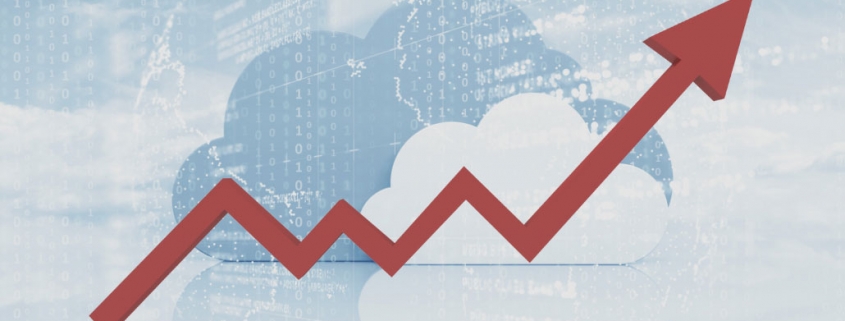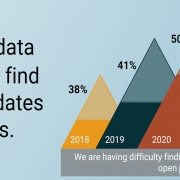Reports of cloud decline have been greatly exaggerated
Cloud providers have experienced unprecedented growth over the past few years. CIOs the world over, often prompted by CFOs and CEOs, have been favoring the cloud over on-premises IT for new and major projects — with the result that the largest cloud provider, Amazon Web Services (AWS), has seen revenue increase by 30% to 40% every year since 2014 (when it recorded an 80% jump in turnover). Microsoft Azure and Google have reported similar numbers in recent times.
But there are signs of a slowdown:
- While AWS reported a quarter-on-quarter revenue increase of 27.5% for Q3 2022, this is down from 33% in Q2 — the slowest growth in its history.
- Microsoft’s CFO has also commented that Azure could see revenue growth decline in their next quarter, following disappointing 35% growth in the three months to September 2022.
Why this slowdown in cloud growth?
The global macroeconomic environment — specifically, high energy costs together with inflation — is making organizations more cautious about spending money. Cloud development projects are no different from many others and are likely to be postponed or deprioritized due to rising costs, skill shortages and global uncertainty.
Some moves to the cloud may have been indefinitely deferred. Public cloud is not always cheaper than on-premises implementations, and many organizations may have concluded that migration is just not worthwhile in light of other financial pressures.
For those organizations that have already built cloud-based applications it is neither feasible nor wise to turn off applications or resources to save money: these organizations are, instead, spending more time examining and optimizing their costs.
Cutting cloud costs, not consumption
Cloud providers’ top-line revenue figures suggest customers are successfully reducing their cloud costs. How are they doing this?
Optimizing cloud expenditure involves two key activities: first, eliminating waste (such as orphaned resources and poorly sized virtual machines); and second, more cost-effective procurement, through alternative pricing models such as consistent-usage commitments or spot instances — both of which, crucially, reduce expenditure without impacting application performance.
Hyperscaler cloud providers, which are more interested in building longer-term relationships than in deriving higher gross margins in the short term, offer tools to help users reduce expenditure. These tools have improved significantly over the past few years.
Many organizations have now crossed a threshold in terms of cloud use, where the savings to be made mean it is to their benefit to invest in optimization (using these tools). One factor driving optimization here is higher cloud expenditure — in part an ongoing consequence of the pandemic, which saw businesses retooling IT to survive, rather than focusing on cutting IT costs.
It should, perhaps, have been anticipated that customers would, at some point, start using these tools to their own advantage — current pressures on other costs having made cutting IT expenditure more critical than before.
Will cloud prices rise?
Cloud providers’ overriding objective of winning and keeping customers over the long term explains why hyperscalers are likely to try and avoid increasing their prices for the foreseeable future. Providers want to maintain good relationships with their customers so that they are the de facto provider of choice for new projects and developments: price hikes would damage the customer trust they’ve spent so long cultivating.
AWS’s Q3 2022 gross margin was 26%, some 3% down on Q2. This drop in margin could be attributed to rising energy costs, which AWS states almost doubled over the same period (hedging and long-term purchase agreements notwithstanding). Microsoft has reported it will face additional energy costs of $800 million this financial year. While AWS and Microsoft could have increased prices to offset rising energy costs and maintain their profit margins they have, so far, chosen not to do so rather than risk damaging customers’ trust.
How will this play out, going forward? Financial pressures may make organizations more careful about cloud spending. Projects may be subject to more stringent justification and approval, and some migrations are likely to be delayed (or even cancelled) for now. As revenue increases in absolute terms, achieving high-percentage revenue gains becomes increasingly difficult. Nonetheless, while the days of 40% revenue jumps may be over, this recent downturn is unlikely to be the start of a rapid downward spiral. AWS’s Q3 2022 revenue growth may have shrunk in percentage terms: but it was still in excess of $4 billion.
Applications architected for the cloud should be automatically scalable, and capable of meeting customers’ requirements without their having to spend more than necessary. Cloud applications allow organizations to adapt their business models and / or drive innovation — which may be one of the reasons many have been able to survive (and, in some cases, thrive) during challenging times. In a sense, the decline in growth that the cloud companies have suffered recently demonstrates that the cloud model is working exactly as intended.
The hyperscaler cloud providers are likely to continue to expand globally and create new products and services. Enterprise customers, in turn, are likely to continue to find cloud services competitive in comparison with colocation-based or on-premises alternatives. Much of the cloud’s value comes from a perception of it offering “unlimited” resources. If providers don’t increase capacity, they risk failing to meet customers’ expectations when required — damaging credibility, and relationships. AWS, Google and Microsoft continue to compete for market share, worldwide. Reducing investment now could risk future profitability.
AWS currently has 13,000 vacancies advertised on its website — a sign that the cloud sector is certainly not in retreat. This fact, rather, suggests future growth will be strong.





 2020
2020


 UI @ 2021
UI @ 2021
